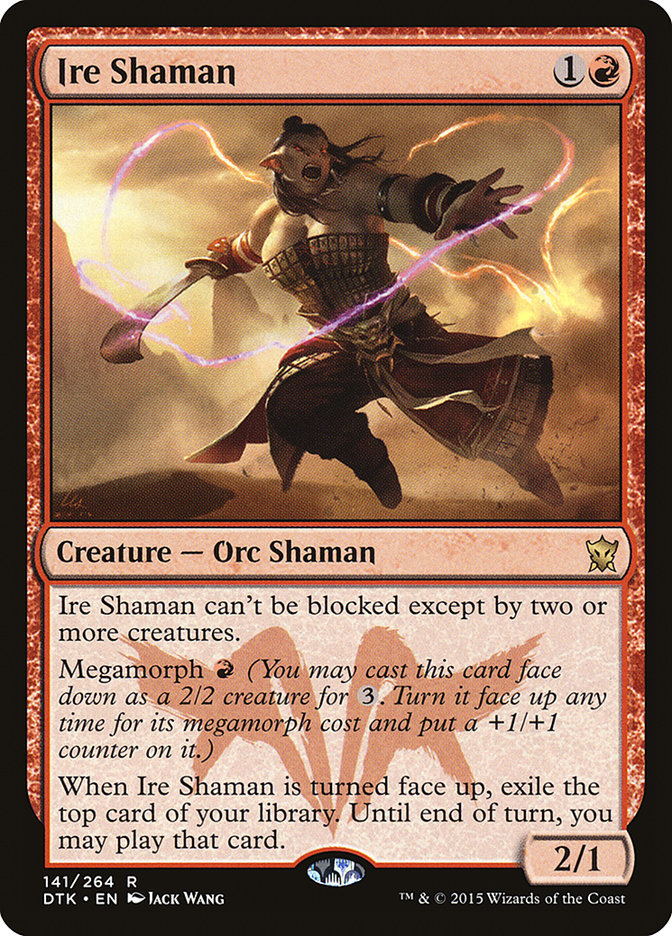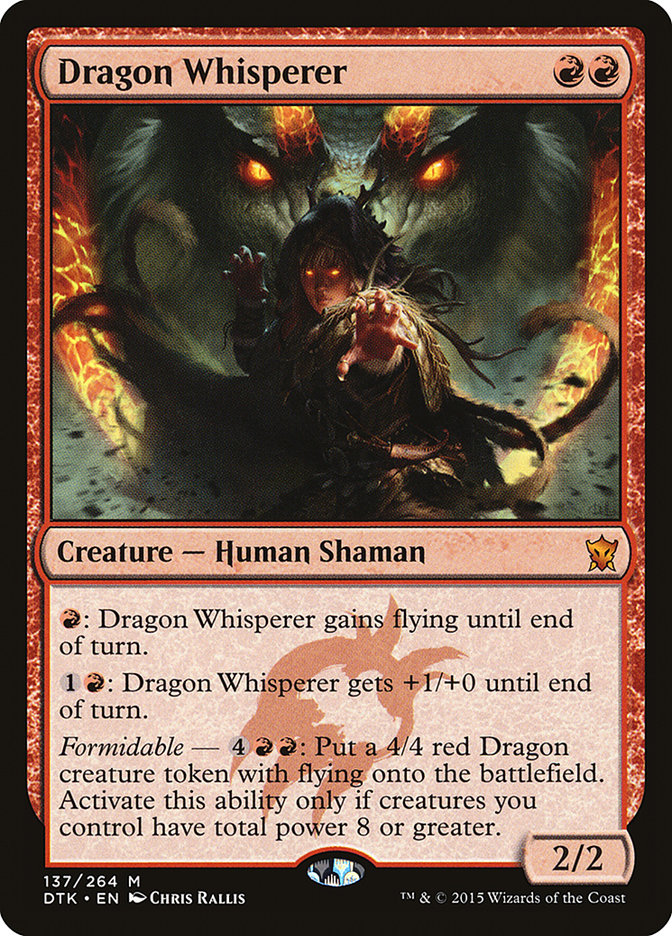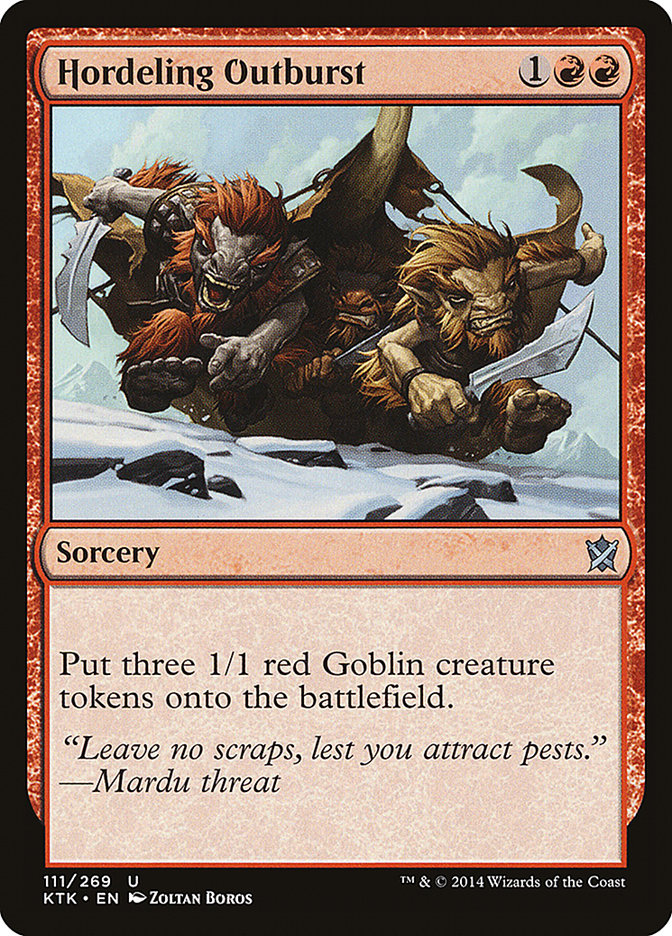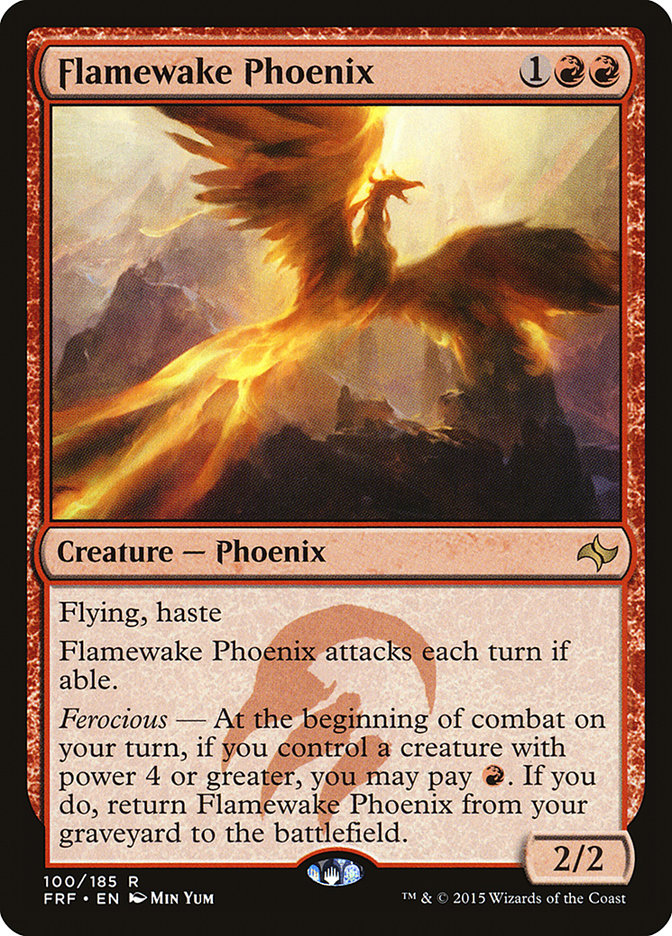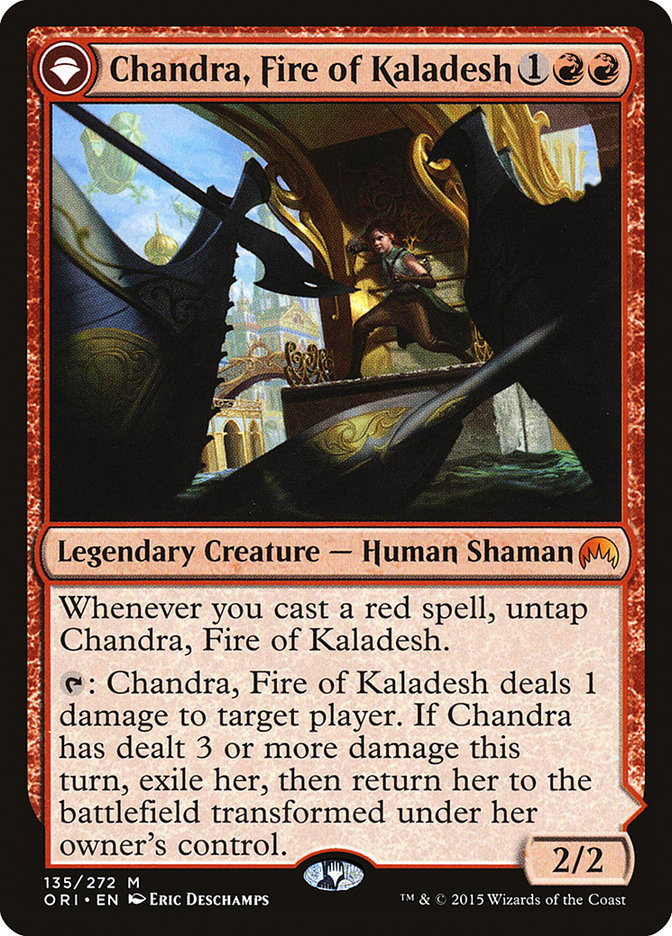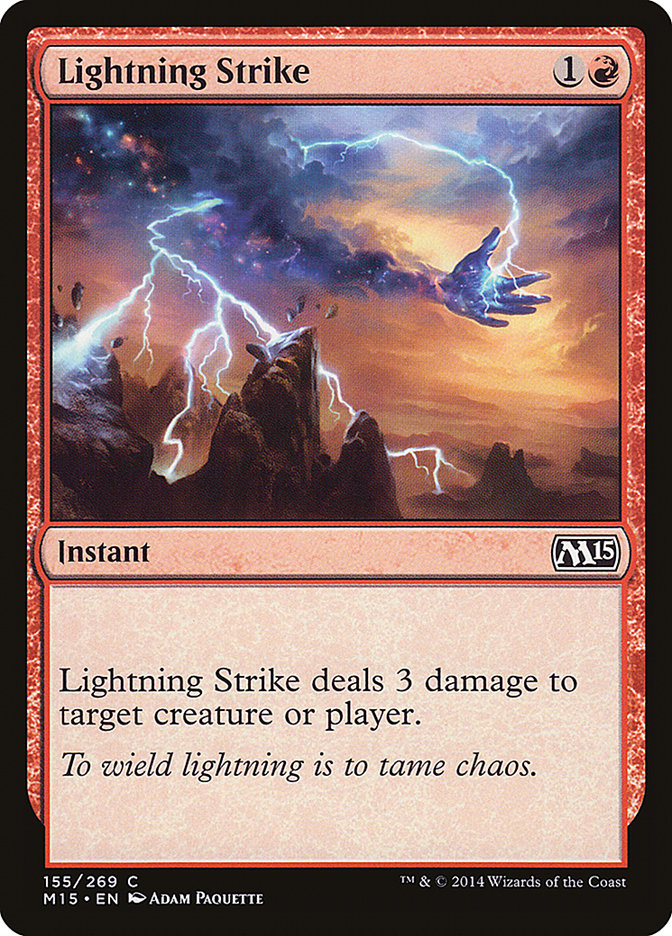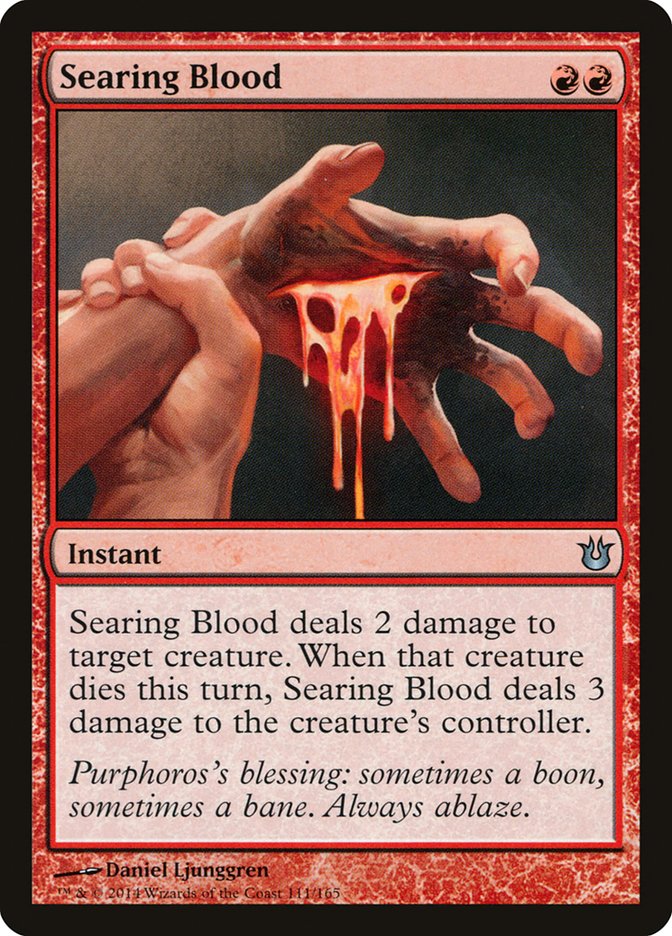Creature-lands. Battle lands. Tri-lands. Painlands. Gainlands. Land lands.
All of these lands!
Battle for Zendikar
is going to promote some pretty ambitious ideas with manabases. We have Mantis Rider into Siege Rhino, Anafenza, the Foremost into Savage Knuckleblade. The
enablers are there, and there have already been tons of attempts at it.
For me, I’m looking to make the most use of this land.
Now why, in a world where you can theoretically play any combination of cards you want in the same deck, would you want to just play just a single color?
Why would you eschew some of the most powerful cards in the format for boring old…Mountain?
Well, to be honest, it’s because I can.
What I don’t want you to get out of this article is anything being told as fact. You also shouldn’t assume that something was missed just because it wasn’t
mentioned. Chances are, if it wasn’t mentioned, I don’t think it’s good enough. Contrary to popular belief, it isn’t about who’s more correct or who’s
better. Just because someone doesn’t think the exact same as you doesn’t mean they’re worse than you, and it isn’t grounds for talking down to them.
Trust me, how you give your opinion is much more important than what your opinion is.
With that said, I want to bring about the position of aggressive red creatures in Battle for Zendikar Standard.
The Good News
There’s a lot of good things about the red team this coming weekend. Primarily, the majority of your great creatures remain.
Monastery Swiftspear is at the head of the pack, with Zurgo Bellstriker playing lead 1-A. These will be your go-to creatures when building any aggressive
red deck. Seems elementary, yes, but you want to understand exactly what limitations both of these cards have, how much you can push away from them, and
what else is going on in the format that may hinder their effectiveness. You’d be hard pressed to cut either of these creatures, but it’s not something
that you want to completely rule out if things shift in an unexpected way.
All of your dash creatures are still around, and they’re likely more important than ever, especially Goblin Heelcutter. I’m not sure which list is going to
be the best, but that’s not really important here. What’s important is figuring out what you want your deck to look like and finding the best pieces for
that. If you want your deck to be full of falters, and if the format ends up being big, dumb, powerful singular creatures, then Goblin Heelcutter is
exactly the type of creature you want to keep the momentum going.
In the same vein, Ire Shaman is of a similar vein, being hard to block and keeping the momentum going, and I actually think that it will be an integral
part of red decks now that Eidolon of the Great Revel is out of the picture, regardless of build. Continuing the trend of faltering, Subterranean Scout
fits that bill as well, even though the stats aren’t impressive at all. If your red deck is planning on going bigger, then maybe Dragon Whisperer is the
tool for the job, especially if you’re utilizing cards like Thunderbreak Regent and even Sarkhan, the Dragonspeaker.
Yes, you’re heading further away from what a traditional aggressive deck is, but the bigger you go, the more lands you need; the more lands you need, the
more relevant landfall becomes. And the more relevant landfall becomes, the more midrange synergies start to pop up. That opens up two avenues for us: low
to the ground, Trinispheres to the wall aggro, or slower, bigger, more resilient, and more synergistic. Titan’s Strength is also a nice way to push your
Dragon Whisperer’s damage through early while feeding formidable late.
Speaking of lands.
The effectiveness of this land is going to greatly depend on a few factors: how detrimental it is to have a land enter the battlefield tapped, how much you
can maximize both the +1/+1 and first strike, how opposing creatures will line up to the +1/+1 and first strike, how cheap the removal spells are from week
to week. The answers to this will, and should, fluctuate as the format develops, and as with anything, should be approached on a week to week basis. The
fact that it exists is wonderful though, as it’s always going to be an option, even if it actually winds up not being good.
Lastly, the burn spells.
Retaining Wild Slash is huge, as it’s the one inexpensive thing keeping us from getting completely stomped out by Rattleclaw Mystics, Raksasha
Deathdealers, and on curve Gideon, Ally of Zendikar. Exquisite Firecraft and Roast will also carry a ton of weight in closing out the game and taking huge
threats out of the equation, respectively. Twin Bolt could also fill in the two mana removal spell slot if things get smaller and smaller, as it handles
morphs, mana accelerants, and Eldrazi Drones, as well as splitting the damage to a player if need be. Arc Lightning trades instant speed and two mana for
sorcery speed, three mana, and one extra point of damage, which is always worth considering if cards like Catacomb Sifter become mainstream, for example.
The Question Marks
The three-drops are the big uncertainties to me.
Hordeling Outburst is very efficient at what it does, but what it does may not be good enough anymore. Part of what made Hordeling Outburst (and to a
lesser extent, Dragon Fodder) based red decks powerful were Stoke the Flames and Atarka’s Command. Stoke the Flames is no longer with us, and Mana
Confluence, a big contributor of making the green splash work for Atarka’s Command, is also not around anymore, so hitting that tenth or eleventh green
source without jamming a million lands that enter the battlefield tapped early (I’m looking at you, Cinder Glade), is simply not possible anymore. I’m not
completely ruling it out, but it’s not something I’m expecting to do with any sort of reliability.
In a similar vein, Flamewake Phoenix does exactly what you want it to do, and it is very good at that. Its stock goes way up when you opt to go with cards
like Thunderbreak Regent and Titan’s Strength, but again, it still may not be good enough for what your particular build wants. Scab-Clan Berserker is the
new kid on the block, and on the surface, it has a pretty good rate, especially when you have ample ways of pushing it through. This is the most unproven
of the pack, however, as its life in Standard has been extremely short–in the sideboards primarily–so I’d keep a keen eye on it.
Lastly, there’s Chandra, Fire of Kaladesh.
Now, I’m going to probably throw caution to the wind and play her anyway, but acknowledging her weaknesses is still important. She is all power, and needs
quite a bit of synergy to utilize that power. That’s precisely where the tension lies, because generally, you want things to be the other way around. You
don’t want to be forced to put pieces together to make something good unless it’s going to win you the game or put you in a very strong position to win you
the game. You want something powerful that also helps the rest of your cards operate synergistically (think Hangarback Walker and Dromoka’s Command). I
think the best way to utilize Chandra is as an overcosted Goblin Fireslinger that threatens to completely decimate the opponent’s life total if they slip
up even a single time. Is it worth paying two extra mana and a turn to do that? It might be if the format lines up that way, but if not, it may be
relegated to the sideboard for matchups where you’re able to put the game in that position, like blue control or really slow green midrange decks.
The Bad
Losing Lightning Strike is brutal.
Dealing with three toughness creatures was one of the ways that red decks became so successful, and as it stands, the only option that we have is Draconic
Roar, and that’s not the most reliable if your only real Dragon is Thunderbreak Regent. Do we really want to put Avaricious Dragon in our starting
lineup? My inclination is no, but it just might be necessary if you really want to support Draconic Roar. Yet another tension in deckbuilding that
open-minded deckbuilders can and will consider when constructing.
If losing Lightning Strike was bad, then losing Searing Blood might have been worse.
This was probably the most brutal play you could have made against decks that hinged on mana accelerants, set-up creatures, or if you were just on the
play. If your red deck wanted to take a ball and get it rolling, then Searing Blood was the best card for that job by a mile. There really isn’t a
replacement for it, but as per always, the format is new, so you’re forced to adjust and find different ways of inching out every point of damage you can.
I almost didn’t include Goblin Rabblemaster in this section because of how much less effective it started to become as the format matured and developed,
but let’s be real. It was a staple to the format since it was released, and up until its last days, it was the absolute best card at running away with a
game and punishing stumbling. It’s not that our options are worse now, it’s just that we don’t have a way to completely take over games with a single card
anymore.
Regardless of which red deck you decide to build, you’re still going to have to deal with Siege Rhino. What’s worse? It’s probably going to be a lot of
players’ go to deck of choice, as it’s going to be filled with reliable and steady tools. We may not know what a red deck will look like, but you can bet
that you can build a half decent Abzan deck in no time, and without too much effort. What makes Abzan-esque decks great is that you know exactly what
you’re getting out of your cards, though, so not having it in your gauntlet, regardless of what you think it’ll look like, is a huge mistake. Your deck
needs a plan to deal with Siege Rhino and everything else surrounding it, and I would personally find a plan for specifically those decks (Roast is a good
start).
This is a good example of just how complex and intricate building Mono-Red will be. There may not be a consensus build, and not every card has been talked
about (that doesn’t mean that I missed it!), but it’ll be interesting to see how everyone else approaches it.



